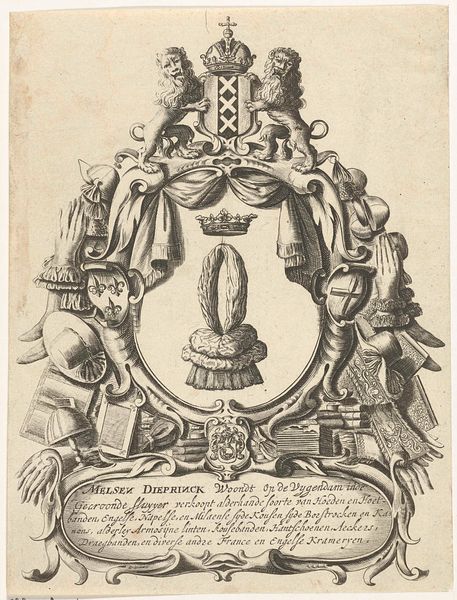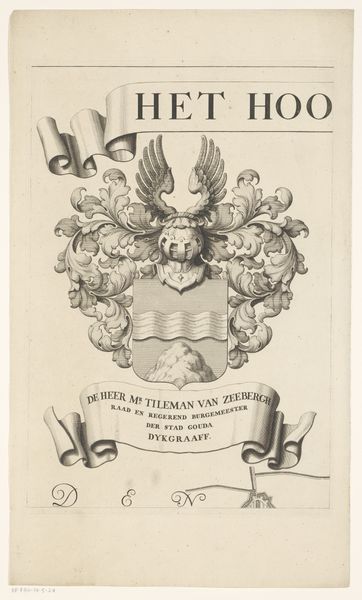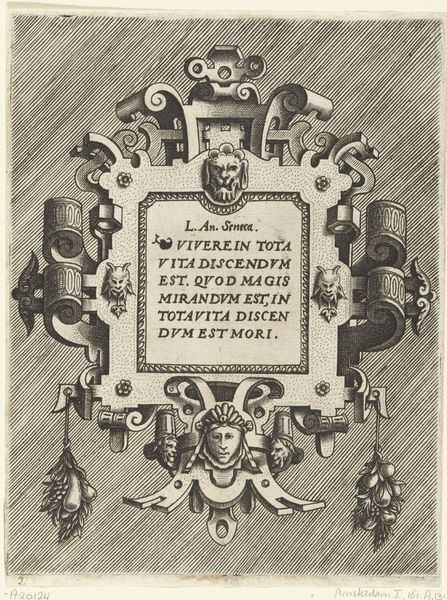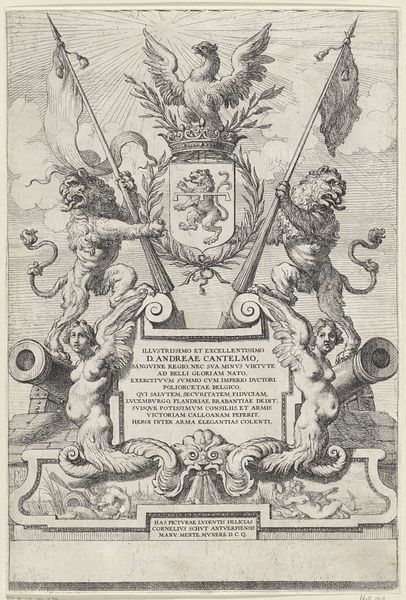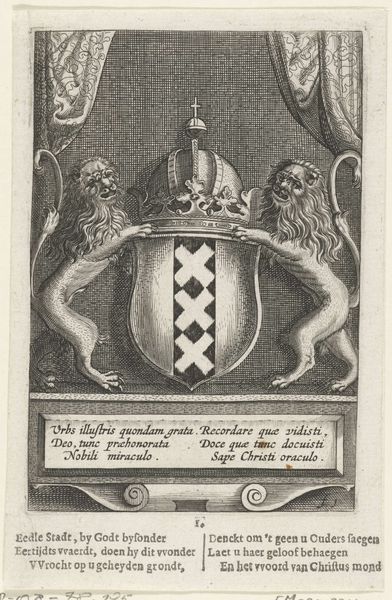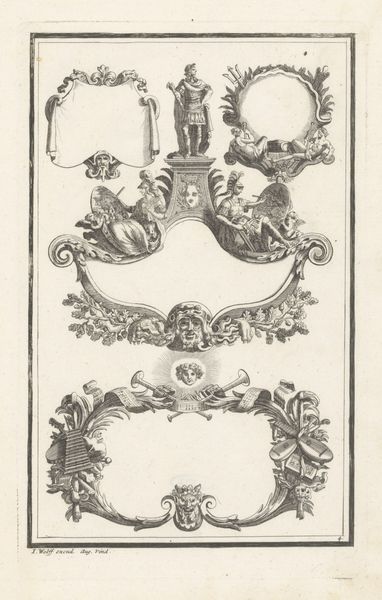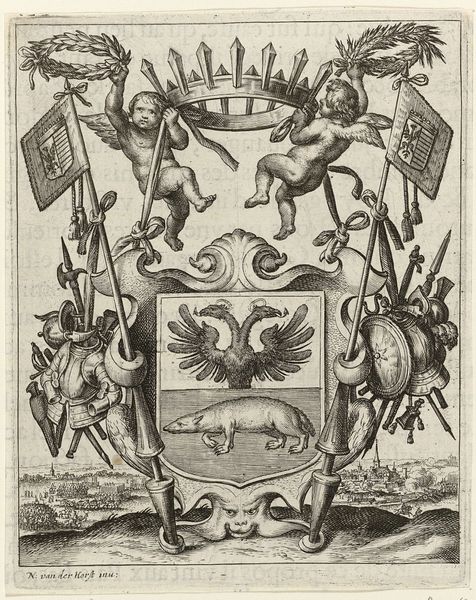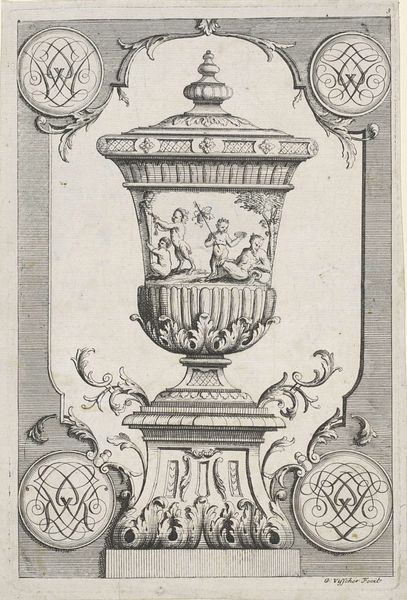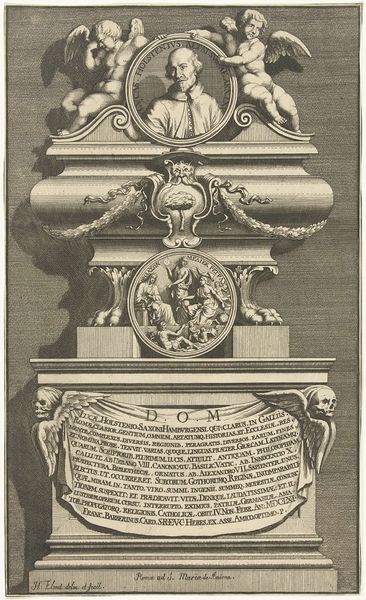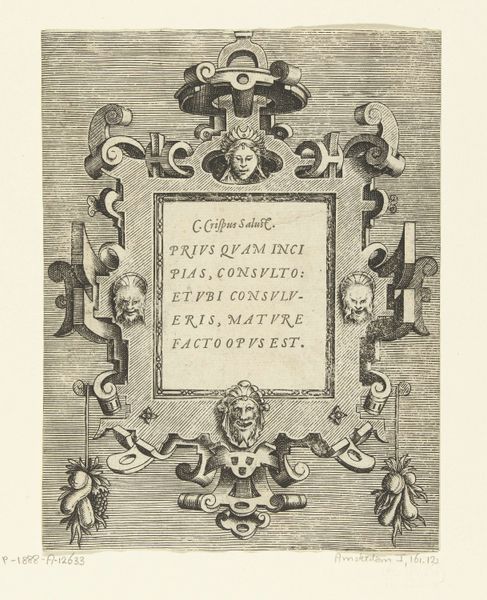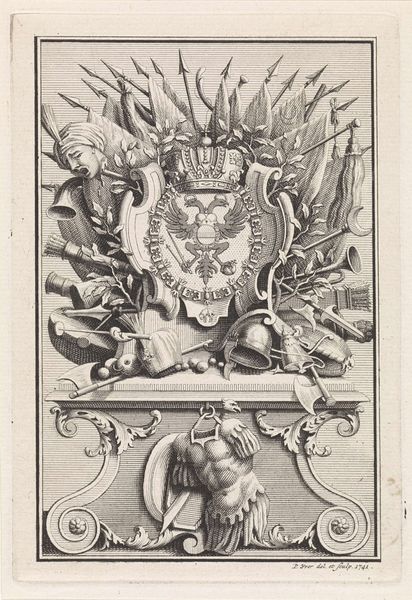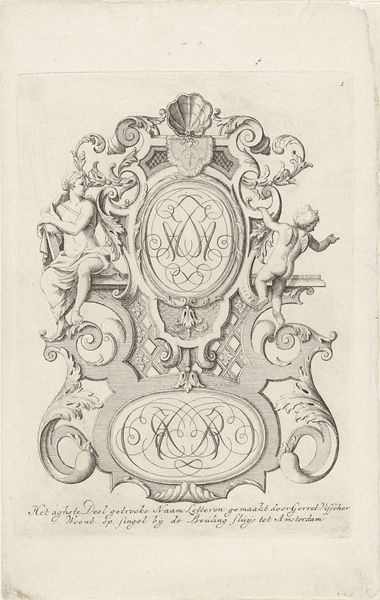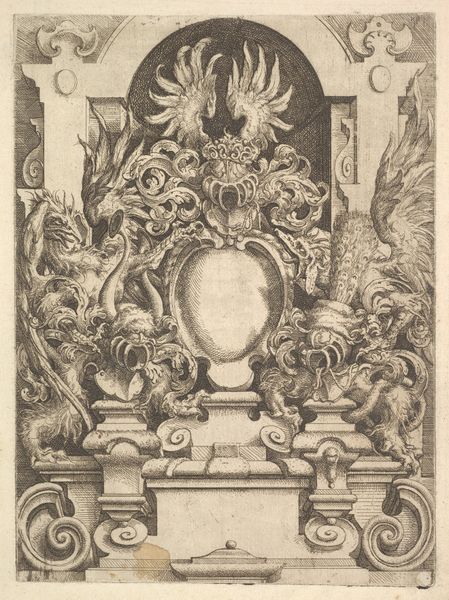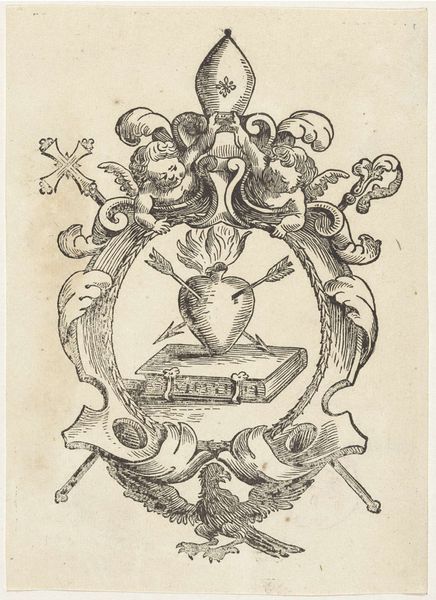
drawing, print, engraving
#
drawing
#
baroque
# print
#
engraving
Dimensions: height 119 mm, width 120 mm, height 197 mm, width 136 mm
Copyright: Rijks Museum: Open Domain
Curator: Here we have a striking armorial engraving, "Wapenschild van Godard Adriaan van Reede," dating roughly from 1660 to 1700. It's a meticulously detailed print showcasing a coat of arms. Editor: My initial reaction is to the stark, formal nature of it. It feels very deliberate, every line and shadow perfectly placed, announcing wealth, status, and control, no? Curator: Absolutely. It's classic Baroque in its love of ornate detail and display. Notice the twin griffins flanking the central shield, each bearing a banner of fleurs-de-lis. And beneath the shield, a bear—perhaps a family symbol? This visual language speaks of lineage and power. Editor: The level of craft here is just stunning. It must have taken so much skill and time to cut those lines so precisely, making the engraving plate to achieve these fine textures. Engraving, in its reproducibility, speaks volumes about power through disseminating identity and prestige widely through print culture, wouldn't you agree? Curator: Yes, these armorial displays functioned as potent emblems, proclaiming lineage, alliances, and accomplishments. Think of them as meticulously crafted logos predating modern branding. Each element–the crown, the animals, the chevron pattern on the shield–would have held precise symbolic meaning to contemporaries, understood by those familiar with heraldry. Editor: So the choice of materials – engraving on, say, copper – isn't accidental; it is tied directly to making that statement repeatable and broadly accessible, within its social echelon of course. The value isn’t just artistic skill, but how the technology serves this purpose of dissemination of class. Curator: Precisely. The engraving makes visible not just the aesthetic preferences of the time, but also reflects specific claims to power, privilege, and social status. It prompts a deep appreciation for cultural memory and continuity transmitted through symbols. Editor: Ultimately, seeing the print through the lens of its process offers us another perspective. The focus on technique allows me to comprehend not just what is presented, but how that display was strategically brought into material being. The combination helps connect me to the culture in which this piece mattered.
Comments
No comments
Be the first to comment and join the conversation on the ultimate creative platform.
